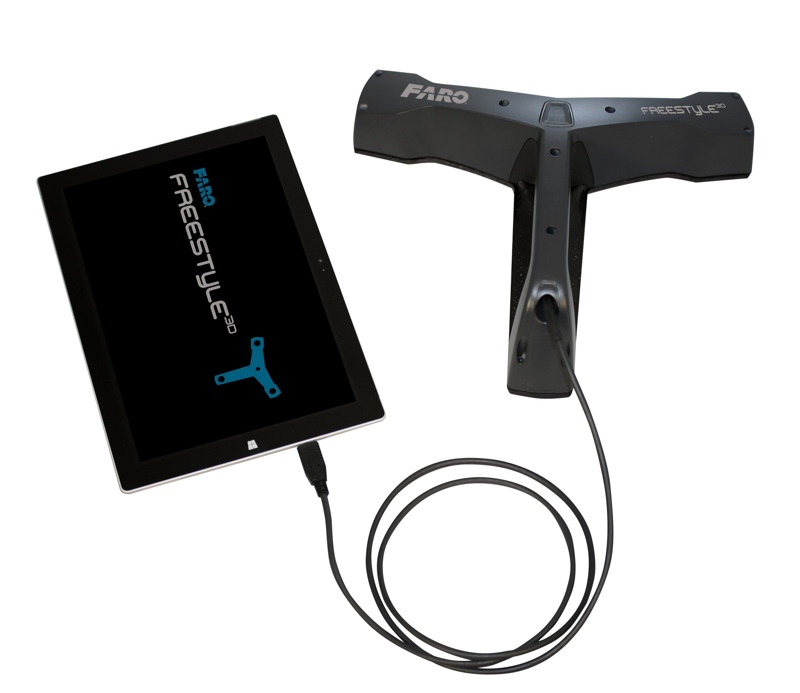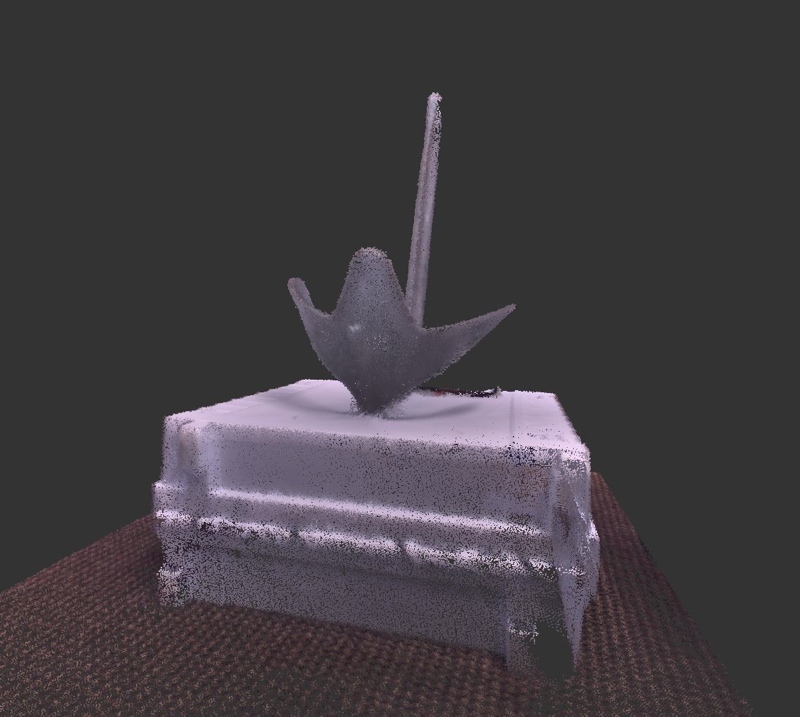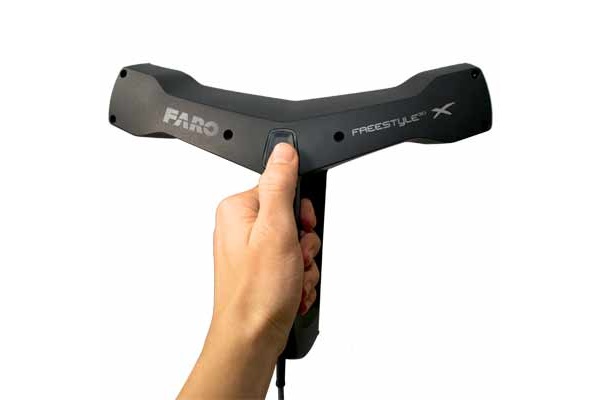Over the past few weeks I’ve had the pleasure of getting some hands-on time with many of the latest hardware releases from FARO, thanks to a fortuitous encounter with our local rep here in Nashville. While I have spent a bit of time with their Focus line of scanners, I am holding off on covering them until I get a bit more time in with the new S-series and Scan Localizer products. I hope I will be able to post more about those in the next few weeks. However, I did get enough time in with the Freestyle3D to have a few thoughts worth sharing.
Who is the Focus3D for?
Unfortunately, I have not been able to spend a lot of time using all of the available hand scanners on the market. In fact, most of my experience is with the Creaform HandyScan and Go!Scan systems. Granted, those systems are aiming at higher accuracies than the Freestyle3D; perhaps at a different market segment in general. However, the Freestyle3D line seems to be expanding in that direction with new models that increase the accuracy from the original Freestyle3D which offers an accuracy of 1mm with a scanning volume of 8m3 (26 ft3). The newer releases both offer higher accuracies with the Freestyle3D X boasting 1mm (0.039 in) accuracy and the Freestyle3D Objects stating 0.5mm (0.019 in) accuracy.
 It’s a great supplement to tripod-based scanners
It’s a great supplement to tripod-based scanners
I spent most of my time with the original Freestyle3D and, in short, found it to be quite capable as an extension of the tripod-based scanners that I use more frequently.
I started experimenting with hand scanners in the first place to capture objects that didn’t scan well with tripod based units (Leica P40, Z+F 5010c, Faro Focus, etc.) due to the objects’ shape or surface material. Additionally, I found it advantageous in tight quarters where I might not have room to setup a tripod. As with everything else, there was a trade-off. You are limited to scanning a smaller volume of space than traditional scanners, and in many cases users are required to use additional targets (many, many targets) in order to maintain tracking given their relatively small fields of view.
The Freestyle3D is still subject to these limitations, but I did find it better able to collect data without having to rely upon targets for registration. However, as you approach the limits of the scanning volume (8m^3 (26 ft^3)) targets are recommended. FARO also recommends them to increase the accuracy. I chose not to use them and saw no errors in accuracy–however, it wasn’t like I had a more accurate device with which to compare my finished data. One distinct advantage of the targets used by the Freestyle3D is that they can be reproduced by a common printer as opposed to having to be purchased from the manufacturer.
The scanning process
As for the experience of scanning, I found it to be quite simple and remarkably easy. The unit has to be tethered to a laptop running FARO Scene via a USB 3.0 connection. The Freestyle3D can also be used with a Surface tablet, but the data will have to be moved to a proper laptop for final processing. Another advantage over the Creaform systems with which I am most familiar is that the USB connection powers the handheld as well, eliminating the need for an additional AC power supply. It’s not a big deal in an office or lab setting but pulling all those cables around in a plant environment is a royal pain.

After a quick calibration scan, you simply aim at the object and begin to sweep across it for coverage. As a structured light scanner, you need to maintain a minimum distance of about 0.3 m (1ft) from the object. You can see what has been scanned by watching the screen of the tablet or laptop. One of the negatives is that you have to keep looking at the laptop in order to verify that you are maintaining lock. That’s something that definitely made me miss the Creaform, which had a series of lights on the handheld that allowed the user to verify lock and optimal scanning position. I’m sure it was out of habit, but I certainly found myself looking for those lights a lot while I was scanning.
Final thoughts
Overall, I was quite impressed with the results. While initially the data was not quite as clean as I had hoped, the Edge Artifact Filter in Scene did a fine job cleaning up edge spray–even on organically shaped objects. While the scan time was quite quick, the processing time for registration afterwards took quite a bit longer. I would estimate that you should expect a processing to scan ratio of around 9:1. The data is, of course, easily importable into all major point cloud and CAD applications.
With a retail price in the $15k USD range, the Freestyle3D provides an interesting extension to tripod-based scanning or a higher accuracy complement to other systems being used for non-engineering applications. If you’d like a complete overview of using the system, Faro has a video available on YouTube.






